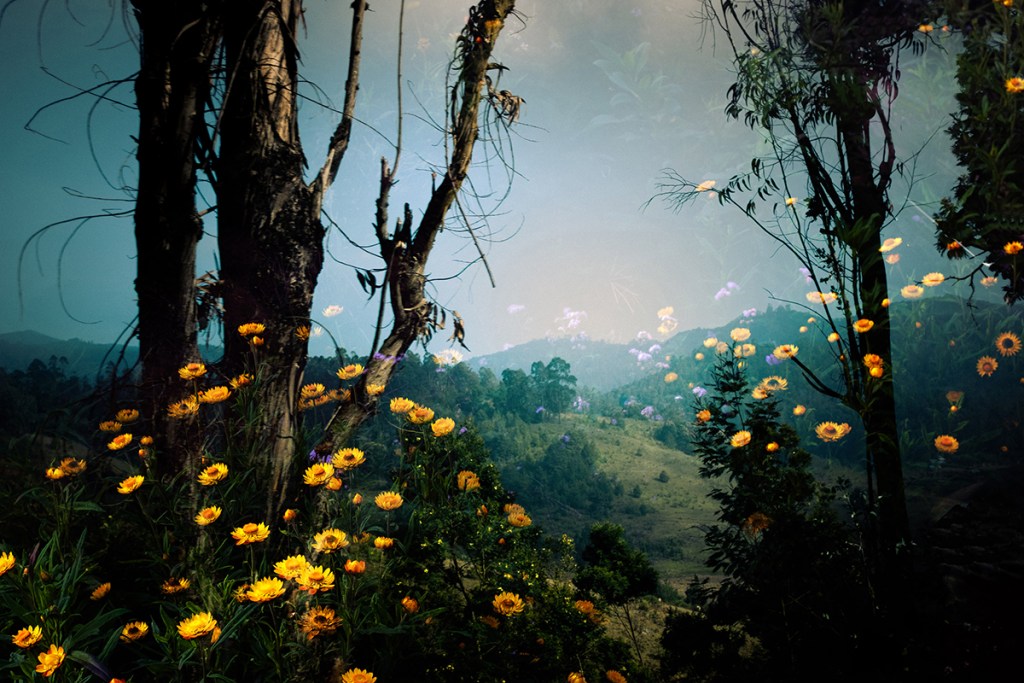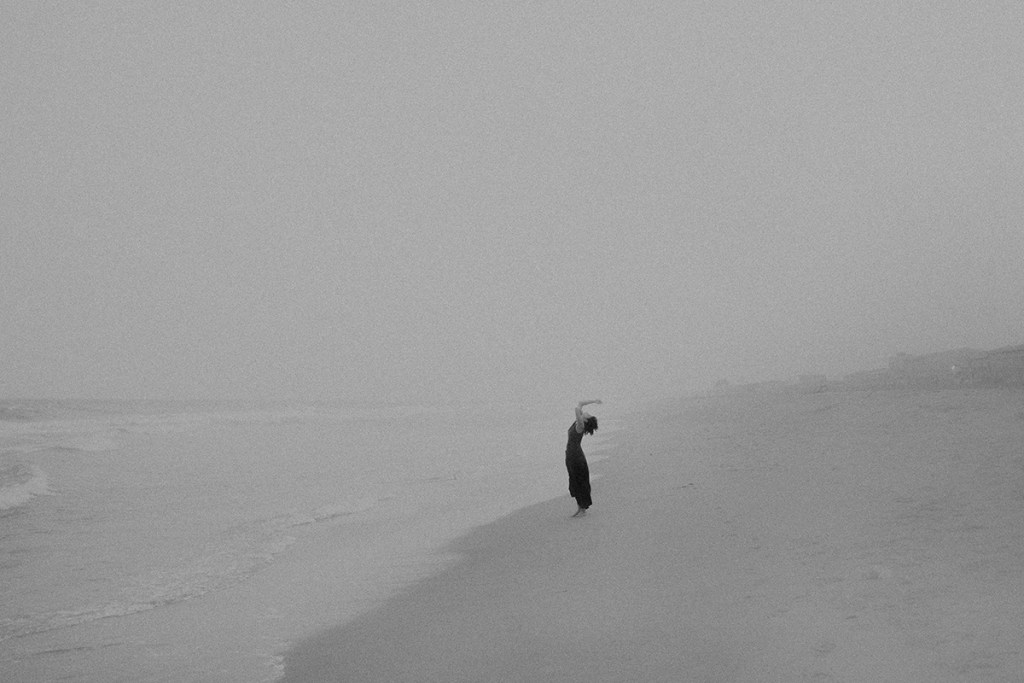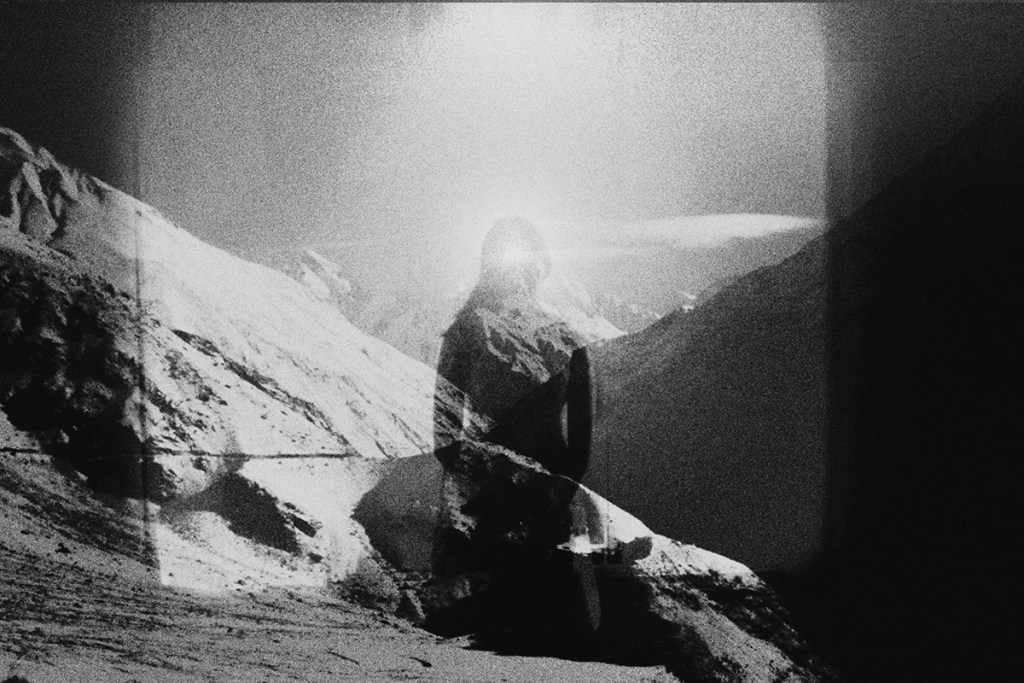Featured Images: Vijay Sarathy
![]()
Vijay Sarathy is a self-taught visual artist and photographer from Chennai, India. His work involves transforming bodies of nature to represent inner states.
Your photographs depict landscapes and objects that feel tantalizingly familiar, and yet they manage to propel the viewer into a parallel universe that is infinitely more surreal and ethereal than what we are accustomed to – quite literally like looking through rose-coloured lenses. Do you consider this to be an improvement, or a distortion, of the things you see around you? What commentary on the real world does your art make?
That’s a really interesting question. I think reality or depicting things as they are has always been a bit boring to me. I mean, we busy ourselves so much with getting the facts right and coming to a common understanding of what anything is and I get that you need that to run the ship – but sometimes you want to deny that. Because everybody is tuned into the world in a very different way, right? It’s all about looking. We really have 7 billion ways of looking if you think about it, and each of it is as valid as the other. The thing is mostly we’re looking at everything including ourselves in the eyes of the world. But if you can learn to deny that once in a while, and look through your own eyes… art for me is just a way to validate that – what you’re seeing at the outset but how it’s really placed in your inner world.
Personally, I’d consider it to be an improvement because the world I try to bring forth with my photographs is the world I’d like to inhabit – which I do in some ways, because it resides in me as fragments of feelings or places, and unlived oceanic memories. And making these lets me pay attention to and validate that world, over and over again.

Instagram has become a double-edged sword. On one hand, artists are able to reach out to a wider audience and opportunities have become much more democratized. On the other, there is this incessant push towards posting regularly, and conversations revolve around “content” instead of “art”. How do you not allow the negativity inherent in social media, and the pressure to stick to a particular aesthetic, define your creativity and zeal?
I have a lot of thoughts about Instagram, but mostly I consider it to be a failed experiment in human connection, or a very successful experiment in commodifying every aspect of our lives and the digital interaction, and sides will be taken depending on if you’ve bought the stock or not. At some point, it felt good to be there but with every passing year, the returns are getting lesser. I think content culture, which is basically the extension of consumptive culture under the capitalist gaze, is eroding our capability to imagine and immerse ourselves in deep states of reflection. We keep making the same images over and over. We forget that we’ve seen them. There’s so much hysteria over nothing, all of it is coming back to building these monuments to our egos. It’s all lonely and tiring.
I think IG as a platform for connection, community and reflection is definitely dead or dying. It’s been hard for me to reckon with that because I owe my career to Instagram but it’s important to know when it is time to move on. I use it mainly now just to post and get out, and I still depend on it for business, but I can see myself completely off of it within the next year or two. I refuse to let the pressures of an exploitative algorithm dictate the nature or pacing of my work, and over time, I’ve learnt to divorce my own desires and vision from what the platform wants out of me. As for how, I think it’s been a process of gradual realization and reminding myself what I really want out of the internet. It’s so easy to get worn out when you keep heeding this external (mostly falsely inflated) pressure to create, and it is so rare for good work to come from that place.
Over the last year, I’ve also been slowly divesting from Instagram and spending more time on alternative platforms which are slower and more humane. I think mainstream culture will continue to be pushed the way it is by Instagram, but these types of alternative spaces will be the new haven for creatives and artists who are looking for a deeper digital experience.
There is a sense of urgency and movement in a lot of your photographs, as if the viewer is laying still and watching the earth revolve around them. Other shots are more arrested, and feel meditatively spiritual. Are these qualities embedded as a result of how you feel when you photograph and edit? Or does it have more to do with the environment and subject of the picture itself?
Hm, it’s hard for me to look at these as separate processes, I think it’s all intertwined and factors into the work I make. Landscapes have always been affecting to me – my work, if you break it down, is really about my transcendental experiences and states of the self in the presence of nature, so I’m always feeding off of the environment. The final photographs are about using compositions as a vehicle to depict an inner feeling, and I think the process draws equally from the subject and my own memories and a bit of what I’m feeling at that moment and a lot of where I’d like to go from there.
With a few photographs, the process is more obscure because it doesn’t draw from anything familiar. To me, those are the most interesting, because the act of making the work becomes an act of discovery. It is very very rewarding to not know the place you’re making from and to respect that in it’s intangible form without wanting to define or understand it. You have the chance to make something truthful.

It has become common parlance to talk about quitting the 9 to 5 lifestyle, and moving out to travel and surround yourself with art and literature. But it takes a lot of visceral courage to break the shackles of conformity and stability, and actually pursue these dreams. What was this process like for you? What advice would you have for someone who finds themselves in a similar position?
A lot of factors came together at the right time so I could pursue this life, so I don’t think it was as much about courage as it was about luck. I could afford to quit my job and pack up my bags and go where my feet wanted to, I had the support of my family and I knew I probably wouldn’t starve even if it didn’t all work out. That’s privilege.
But it’s still crazy to think about how I ended up here because I had a sheltered middle-class upbringing with no exposure to the arts early on. Three years ago, I hadn’t picked up a camera and was working a design job in the city and I felt like my life was over. It’s quite surreal and I still have a hard time thinking of myself as an artist because the world I came from is so far away from the space I currently inhabit, and not just in terms of living in the Himalayas. In 2019, I visited Spiti for the first time and followed a hunch that nature could bring me closer to myself. I’m so glad I did, the ride since then has not been easy but I’m just happy to be on it.
I think if anyone reading has the luxury and the opportunity to stake their entire life on a feeling in their head, a dream of a more purposeful path, they almost have a responsibility to do that. Because a lot of people can’t afford to even think of it. Gamble with destiny. Throw that spear in the dark and go searching for it. And even if you can’t do any of this, you can still start small and find time to work at what really moves you. The necessary conditions can be made. And remember to question the narratives that you have been given since birth and you’re supposed to adopt. Remember to claim your life as your own.
You’ve mentioned being inspired by the Beat Generation and the work they created, particularly that of Kerouac and Cassady. What is it about them and their lifestyle that captivates you? How do you deal with the loneliness that might arise from travelling and exploring new places like they do?
The Beat Generation were really the first of what we now call ‘the experience generation’. The books were good but what I was really taken by was the spirit and attitude to life that was present in the way they moved through the world, the philosophy from which the words emerged. They believed only in lived truth and they had the conviction to see that way of life through to the end. Flawed as they be, to me their lives were deeply poetic.
Reading them once is enough. It either completely frees you or you think they are delusional hacks. For me, it was the former because I’ve always identified as a drifter and the only home for me is the feeling of being on the move, the desire to always be arriving somewhere. And I think the idea that you could give it all up and spend your entire life drifting and seeing and chasing something that takes you closer to what it is all about really stuck with me. My life is nowhere as chaotic or adventurous but having them in my head has really opened me up to experimenting and taking risks and following hunches – thinking with my heart, so to speak.
Loneliness… that’s never been an issue for me. I’m quite comfortable in my own company and with my own thoughts. Culture is sort of always trying to tell you that you are inadequate by yourself, but I’ve found that if you can fight against that and learn to live with yourself… some of the most gorgeous moments of my life have been in my room when I was quietly creating. Of course you do need community & intimacy and I think you can find that anywhere if you’re just open and attentive – you practically radiate that energy. And even if you can’t find that, you still have you, and I think we should learn to let that be enough.

In your photographs of people, it often feels as if the viewer is intruding upon a private moment, and that even the photographer didn’t truly exist when it was taken. How do you get your models to forget the lens and fully submerge themselves into the environment around them?
I work with very few people. Actually most of it is just with this friend of mine – Mitra. She’s incredible, she has so many layers to her and it’s almost like those become part of the landscape. We’re never trying too hard to stage the shot or perform for the camera, she’s just doing her thing and I’m just trying to find the best way to look at that and it comes together quite organically. Over time, the camera has disappeared, and we just talk. It feels intrusive because you are listening in on a conversation – in a language that is universal.

Has your lack of formal training, and reliance instead on self-education, helped or hindered your skillset? How has it affected your creative processes?
I can’t speak for my life if I’d taken the formal path because I haven’t experienced it, but I have no qualms about not going that route. I don’t think art school would have worked out well for me, because I’ve always been disillusioned with structure. My process right now isn’t too rigid, the rules are in my head and that’s always been important to me. I think going the self-taught way gave me more time to actually experience life and find out where I really belonged. I wouldn’t have moved to the mountains otherwise, and the work I’d be making… I don’t think there’d be too much in that. Cohen said it best – ‘if your life is burning well, poetry is just the ash’. It gave me a lot of time and incentive to find out what I really wanted to say. I doubt that someone could have handed that to me in school.
There is a deep sense of melancholy and gloom pervading your photography and writing. Does it often feel exhausting, being so immersed in this torrential sea of emotion and thought? What do you do to distract yourself when you need a break, so you can come back with more energy and a fresh perspective?
There’s a Japanese term I recently came upon called mono no aware (物の哀れ) which translates to the sensitivity to ephemera, the awareness of the transience of all things which heightens the appreciation of their beauty, and evokes a gentle sadness at their passing – and I think this best describes what has been the most persistent feeling in my life. All of my work stops at this place before it fully takes form. I’d like to think it’s not about depicting gloom as much as it is a way of celebrating the transience and fragility of the unfolding moment. I love being put in that space of elevated sensitivity, so I rarely feel the need to take a break from it.
It’s important to surround yourself with an environment that takes care of you, because you are always going to be affected by whatever is around. For me, that’s nature – which has always been a way for me to talk to myself and sit with difficult thoughts and feelings and confront them. Nature’s been the way in, and it’s been the way out.

It’s been a while since you left the city for a more quiet and introspective life in the village. How has your relationship with nature changed during this transition? How have you changed?
The altered state of mind that being in nature puts you in is so hard to communicate. The rhythm of the day becomes slower, and more purposeful. Your thoughts feel lush, almost unconstrained. The afternoon light is, somehow, so heartbreaking. If you are paying attention, everything can be ecstatic. I’ve changed a lot in ways I will never be able to put into words. And my bond with nature has only deepened – and on some days, I can really feel that I’m part of the soil as much as the grass is. I mean, if we can all go back to that… so much of our modern issues stems from our conflict with nature, our perception that it is something outside of us. We’re really waging a war against ourselves. If you could just get everyone to go to the nearest forest and do nothing but listen for a bit, it’d point us to how innate nature really is. I’m digressing a bit, but I think it’s one of the last stages left on earth where you are allowed to be yourself, where nothing is being sold to you. And even when you’re still, you’re being moved.

What are some of your dream travel destinations that you’d love to photograph one day?
I’m just going to keep it to India because there’s so many incredible places to see here. Hiking through Ladakh has been a dream and it might just happen this year. Rann of Kutch for the empty expanses. The Western Ghats, I’ve spent some time there and I intend to go back. And more time in Havelock! I haven’t seen better beaches.
The final question is something Harry Styles asked Timothée Chalamet in an interview for i-D, and is a question I ask everyone I meet – If you could only read one book, listen to one song, watch one movie, and talk to one person for the rest of your life, what would they be?
This really is the hardest question. The book would be Letters to a Young Poet by Rilke. The song, PPP by Beach House. The movie, Portrait of a Lady on Fire. And the person, at the risk of becoming more beautiful, would be my mom.
Selected work by Vijay Sarathy is available to purchase on his website.


Leave a Reply